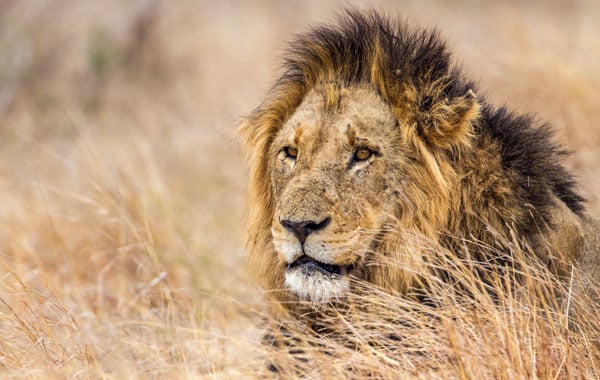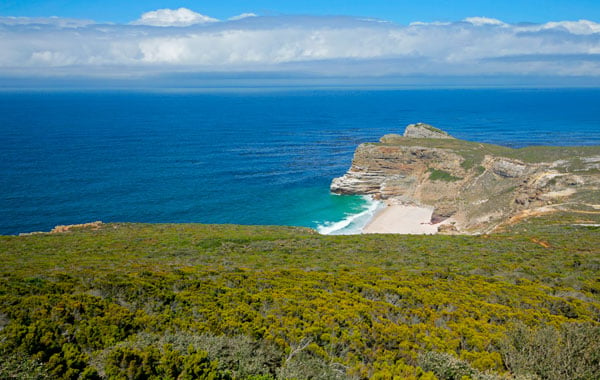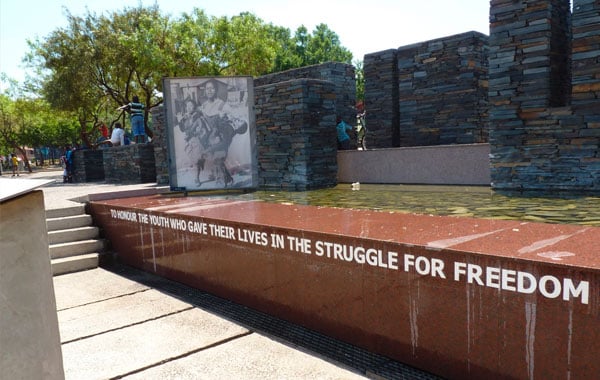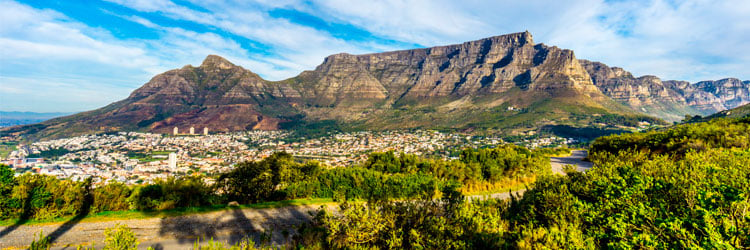Exploring South Africa: Perspectives for Student Programs
For many educators and global studies leaders, the ideal educational program offers a range of content across multiple academic disciplines, and opportunities to explore complex themes in real-world applications. Easily accessed, with a depth of content in biology, conservation, culture, and history, South Africa is a perfect destination to meet these criteria. The country embodies a spectrum of possibilities, with flexibility for individual program focuses.
A closer look at South Africa reveals a larger story of conservation leadership, natural resource management, and social challenges as a result of colonial and Apartheid rule. Students can engage in in-depth discussions on these topics, witnessing firsthand the country’s current successes and challenges while brainstorming future solutions.

Science in action: conservation leadership
South Africa is a mecca for biology enthusiasts; the country is home to the “Big Five” (African elephant, black rhino, Cape buffalo, African lion, and African leopard) and other safari highlights, as well as African penguins, Cape fur seals, whales, endemic bird species, and a staggering 22,000 species of plants.
Most of this treasured biodiversity is stewarded through well-funded government infrastructure, which offers not only a chance to observe iconic wildlife but also take a closer look at how it is managed, protected, and interwoven with human benefit.
South Africa's national parks system is centered on conservation, responsible tourism, and socioeconomic development, with a multitude of initiatives. Just a few to explore: energy efficiency programs, poaching reduction, environmental education, school partnerships, sustainable resource use, and rural development.
Kruger National Park is the crown jewel of the national parks, and the best place to see “The Big Five” in South Africa. Access to Kruger is also incredibly easy. “There are private reserves and lodges all around the outskirts of the park, plus accommodation operated by the national parks service,” says Sandy Schmidt, Holbrook specialty travel consultant who first visited South Africa in 1995. “The roads are also paved throughout Kruger, and there are multiple points of entry, so it’s all very accessible for visitors.”
South Africa’s impressive plant life is also strongly stewarded through the South African National Biodiversity Institute. This organization manages ten National Botanical Gardens across the country, with a focus on research, conservation, tourism, and translating science into policy. (The SANBI also manages the country’s national zoo.)
There’s also “blooming season,” where wildflowers spring up en masse north of Cape Town, a result of annual heavy rains after a long dry season. Though the phenomenon is picture-perfect, it also offers up the opportunity to discuss resource management and climate change, as Cape Town’s water supply relies on a dependable rainy season to fill reservoirs. Students can examine Cape Town’s initiatives to mitigate their 2018 water crisis and analyze successes and drawbacks, plus brainstorm possible future solutions.

The Cape Town Experience
Originally dubbed “The Cape of Good Hope” by the Portuguese, Cape Town was the first European settlement in South Africa, and changed hands from the Dutch to the English due to its strategic position as a stopover on the spice trade. The Dutch were pushed further north, resulting in a stronger English influence in Cape Town and a stronger Dutch influence in Johannesburg and Pretoria. All three cities still reflect these origins, and yield an opportunity to discuss colonial history in South Africa, the interrelationship between commerce and geography, and the lasting effects of foreign governance.
Specifically, one important cultural site in Cape Town is Robben Island, barely four miles off the coast of the city. Used as a prison throughout the colonial period and Apartheid, today it is a UNESCO World Heritage Site accessible by ferry, and offers tours as well as a museum. Three former inmates of Robben Island went on to become presidents of South Africa, including Nelson Mandela. Students can see firsthand the cell in which Nelson Mandela was imprisoned for 18 of his 27 years behind bars, a solemn experience that leaves a lasting impact.
In addition to its cultural significance, Cape Town is replete with natural beauty. Table Mountain and the surrounding floristic region boast world-class plant biodiversity, plus stunning views of the Atlantic and Indian Oceans. Along the coast, Boulders Beach and Seal Island offer a chance to see African penguins and Cape fur seals, respectively. Nearby, Hermanus is home to some of the best whale watching in the world. All of this natural life is nestled close to the city, giving students the opportunity to observe how people, nature, and history are intertwined – and the relationship between the three.

Hector Pieterson Memorial in Soweto by Ina96 (CC-BY-SA-3.0)
Social challenges and responsible tourism
For educational programs, a journey to South Africa isn’t complete without experiencing the social and cultural history of colonialism and Apartheid. The legacy of Dutch and English rule followed by Apartheid is a complex issue for thoughtful discussion. Visitors can still observe the echoes of institutional segregation throughout the country, even simply through population distribution according to race. “It’s important to visit South Africa and get a better understanding of that cultural context,” Schmidt says. “It’s not easy to reconcile, but it’s important.”
Time spent in Johannesburg affords the chance to see the Apartheid Museum as well as Soweto Township, the former home of Nobel Prize winners Nelson Mandela and Archbishop Desmond Tutu and site of a monumental uprising in 1976. While white South Africans were allowed to live in the cities during Apartheid, the black African majority was relegated to townships like Soweto, and stifled under poverty-stricken conditions. Today, Soweto is struggling to balance its past and its future, with the added complication of gentrification from tourist presence. Visitors to Soweto should be mindful of the kinds of experiences they choose to have in the township, and who their tourist dollar is benefiting.
In other rural areas, school visits offer an opportunity for one-on-one cultural interaction between fellow students in a completely different educational system. Integrating the country’s natural and cultural heritage, SANParks and SANBI both work to further the socioeconomic development of rural areas and underserved townships, especially for schools and young students. Volunteer opportunities can serve both ecological and social benefit, depending on the project.


